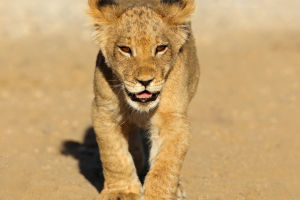Hey Lykkers! Ever wondered why cats are such captivating creatures?
Let's dive into some intriguing facts about our feline friends and uncover what makes them so unique.
1. Cats Have a Unique Communication Style
Cats communicate with humans through meowing, but did you know that adult cats rarely meow at each other? Meowing is a behavior mostly reserved for interacting with humans, making it a special language they use just for us!
2. They Can Rotate Their Ears 180 Degrees
Each cat ear has 32 muscles, allowing them to rotate independently up to 180 degrees. This impressive ability helps them detect sounds from various directions, which is especially useful for hunting or sensing potential threats.
3. Cats Sleep for Most of Their Lives
On average, cats sleep for 12 to 16 hours a day, and some even sleep up to 20 hours! This means that a cat spends nearly two-thirds of its life sleeping, allowing them to conserve energy for bursts of activity.
4. They Have an Extraordinary Sense of Smell
A cat's sense of smell is 14 times stronger than a human's. With around 200 million scent receptors in their noses, cats rely heavily on scent to identify food, detect other animals, and explore their surroundings.
5. Cats Use Their Whiskers to Navigate
Cats' whiskers aren't just for show; they serve a crucial role in helping them navigate. Whiskers are highly sensitive and help cats measure the width of openings, detect nearby objects, and even sense changes in the air around them.
6. They Can Jump Up to Six Times Their Length
Cats are natural athletes! They can jump up to six times their body length in one leap, thanks to their powerful back legs. This skill is essential for hunting and escaping from danger in the wild.
7. Purring Has Healing Benefits
A cat's purr is not just a sign of contentment; it may also have healing properties. Studies suggest that purring at a frequency of 25-150 Hz can promote tissue healing and reduce pain, which could be why cats purr when they are injured or feeling unwell.
8. They Have a Unique Grooming Behavior
Cats spend nearly 30-50% of their waking hours grooming themselves. Grooming keeps their fur clean, regulates body temperature, and even serves as a way to relieve stress. This meticulous grooming habit is one reason why cats are known for their cleanliness.
9. Each Cat Has a Unique Nose Print
Just like human fingerprints, each cat's nose print is unique. The pattern of ridges and bumps on a cat's nose can serve as an identifier, which is why some animal shelters use nose prints for identification purposes.
10. They Have a Powerful Night Vision
Cats are equipped with night vision that allows them to see in low light. Their eyes contain a special layer called the tapetum lucidum, which reflects light and enhances their ability to see at night. This adaptation helps them hunt and explore in dim environments.
Cats are remarkable creatures with a blend of agility, intelligence, and charm. Next time you're around a cat, Lykkers, remember these fascinating facts and appreciate the wonders of our feline friends!


